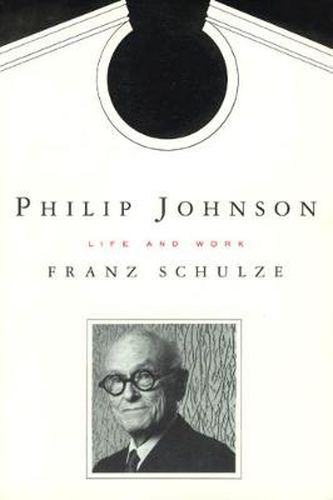Readings Newsletter
Become a Readings Member to make your shopping experience even easier.
Sign in or sign up for free!
You’re not far away from qualifying for FREE standard shipping within Australia
You’ve qualified for FREE standard shipping within Australia
The cart is loading…






In this biography, Franz Schulze probes the private and professional life of one of the most famous architects and architectural critics of the 20th century. The only son of a wealthy Midwestern family, Philip Johnson was a millionaire by the time he graduated from Harvard, and in 1932 he helped stage the historic International Style exhibition at the Museum of Modern Art. A patron of the arts and a political activist who flirted with the politics of Hitler, Huey Long, and Father Coughlin, Johnson created controversial and historical structures such as the Glass House, the Roofless Church, the AT & T Building, the Crustal Cathedral, and many more. Johnsons’s personal charms paired with his manipulative ploys - like his borrowing of designs - shine through in this biography. Drawing on Johnson’s correspondence, personal photographs, and speeches, and on interviews with his friends and contemporaries, Schulze fills the biography with information on the architect’s family, travels, friends and lovers, and his many buildings and spaces themselves.
$9.00 standard shipping within Australia
FREE standard shipping within Australia for orders over $100.00
Express & International shipping calculated at checkout
Stock availability can be subject to change without notice. We recommend calling the shop or contacting our online team to check availability of low stock items. Please see our Shopping Online page for more details.
In this biography, Franz Schulze probes the private and professional life of one of the most famous architects and architectural critics of the 20th century. The only son of a wealthy Midwestern family, Philip Johnson was a millionaire by the time he graduated from Harvard, and in 1932 he helped stage the historic International Style exhibition at the Museum of Modern Art. A patron of the arts and a political activist who flirted with the politics of Hitler, Huey Long, and Father Coughlin, Johnson created controversial and historical structures such as the Glass House, the Roofless Church, the AT & T Building, the Crustal Cathedral, and many more. Johnsons’s personal charms paired with his manipulative ploys - like his borrowing of designs - shine through in this biography. Drawing on Johnson’s correspondence, personal photographs, and speeches, and on interviews with his friends and contemporaries, Schulze fills the biography with information on the architect’s family, travels, friends and lovers, and his many buildings and spaces themselves.